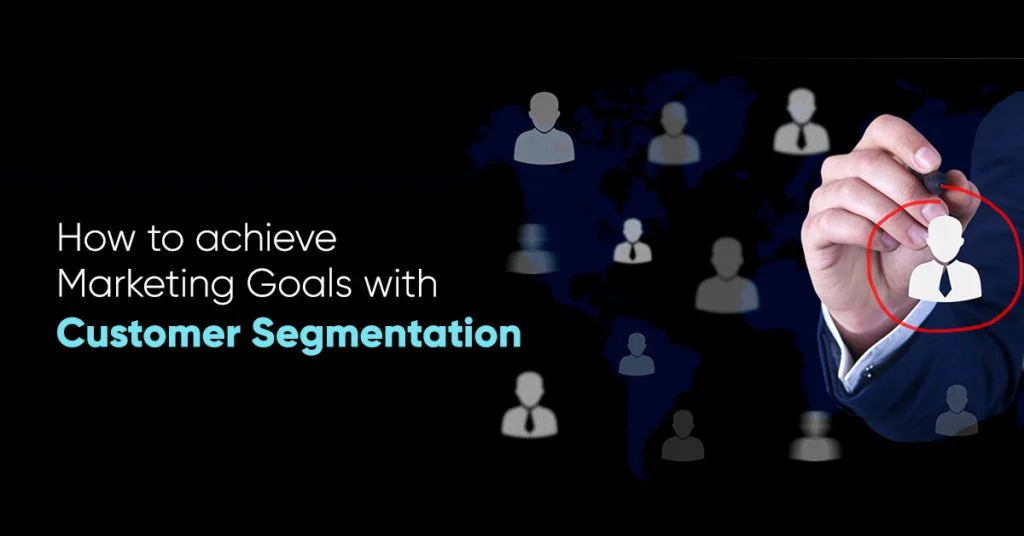Marketing plays a vital role to grow any business or organization. In our last article, we learned about how Media Marketing Analytics could be beneficial for any organization and how we can make strategies to outperform our marketing platforms. Strategies can help us to attain a specific goal but what after that? How do we maintain our customers and their needs? So, here is the part where we enter Analytics i.e. Customer Segmentation and its utilization. Customer Segmentation is the master solution for tracking and reaching out to all customers’ needs. Let’s learn more about it.
Customer segmentation processes division of customers into groups based on common characteristics so that the businesses can market to each group effectively and appropriately. In many B2B (Business-to-Business) marketing, a company might segment customers according to a wide range of factors that includes industry, number of employees, products previously purchased from the company and location.
WHY CUSTOMER SEGMENTATION?
Why do businesses choose Customer Segmentation? So, the answer is the Customer Segmentation reliably allows marketers to better tailor their marketing efforts to various customer subsets. These efforts can be related to communications and product development as well.
Segmentation helps a company in creating and communicating targeted marketing messages that will resonate with specific groups of customers, but not with others (who will receive messages tailored to their needs and interests, instead). It also helps in selecting the best communication channel for the segment, which might include emails, radio advertising, social media posts, or another approach, depending on the segment which establishes better customer relationships and also focuses on the most profitable customers. Thus, it also eases in identifying ways to improve products or establishing new product or service opportunities plus make a rise in upselling and cross-selling, other products and services.
HOW TO CREATE SEGMENTS?
The first step to build customer segments is to come up with an exhaustive set of business-relevant factors that can be used to segment customers. The factors are then assessed for their completeness and quality and then decide the final set of factors.
For retail, the general features considered for segmentation are Geographic location (region, climate), Number of trips in a year, Purchase type (impulse, convenience, compulsory purchase), Demographics (age, gender, income, ethnicity), AUR (Average Unit Retail), UPT (Units Per Transaction), Number of returns made, etc.
A quick way to create the segments is to follow RFM Methodology (Recency, Frequency, Monetary). For customers of the retail sector, examples for segmentation RFM features are as follows:
Recency: When was the last purchase made within a year?
Frequency: How many trips does a customer make to the store?
Monetary: Does the customer purchase more at Full-price or is a Markdown shopper?
Some of the algorithmic approaches to build customer segments are K-means clustering, CHAID model, Latent Class Clustering etc. These techniques can incorporate customer behaviour aspects to further enrich the segments.
Future of Customer Experience Lies in Segmentation
Once you know who your customers are and how they behave, you’re all set to take the next step and pair these facts with how they feel about your brand. Customer feedback is usually gathered from surveys, social media platforms like Twitter and Facebook, online review sites, call centre recordings and beyond. Now, all you need is a place to store all this information to take the next step with pairing customer demographic and behavioural data with customer feedback data. The key is to find a central hub where you can easily manage and access all this rich information/data.
Customer Segmentation grants you to fine-tune the service or product you offer to your customers which better suits their needs –in turn, that actually increases their trust in your brand. When any company has built their trust over their customers, there are the chances where they’ll be more likely to return to you when they find themselves in a similar situation in the future. This is because you’ve helped them out in the past when they were facing issues, you served them with exactly what they needed to overcome a certain pain point.
Customer Segmentation is always focused on customers’ needs. Proper customer segmentation makes a bridge between you and your customers. Even after you’ve made a sale, they’ll keep in touch with you. Ultimately, combining segmentation data with customer feedback will offer your customers an unmatched, personalized experience through which they never have a reason to turn to competitors.
About the Author
Shivakumar is an Analytics Manager at Factspan who has a keen interest in retail industries and has worked for multiple fortune 500 retailers across domains of merchandising, marketing, customer strategy, and product management. He loves watching football and is an avid supporter of Arsenal FC. He also loves travelling and has been to 9 countries across 3 different continents so far.










